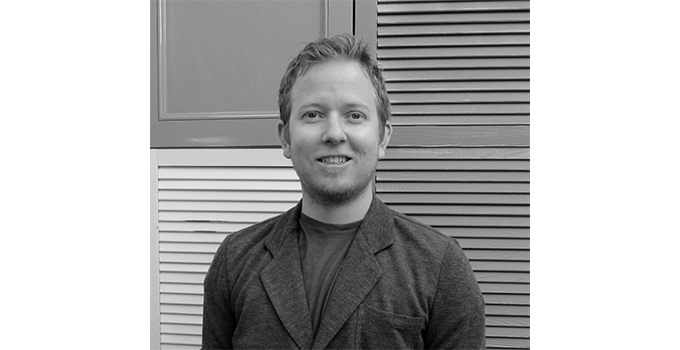Research: Dr. Luke Connal – I like to build stuff

“I'm a polymer chemist,” says new Research School of Chemistry recruit Dr Luke Connal.
“That's never really changed, it doesn't matter where I’ve been, no matter what departments nor countries. I like to say we make stuff for lots of different reasons. We design new polymers to do new functions, and hopefully new technologies come out of that.”
Dr Luke Connal has had a varied career in chemistry, one that did not always land him in chemistry departments. He completed his undergraduate degree and PhD at Melbourne University in chemical engineering, before completing a post doc at the University of California, Santa Barbara. Subsequently Connal moved back to Melbourne in 2013 as a senior lecturer before applying for a position at the ANU.
“I'm not sure exactly how it happened really. There was a position advertised at RSC and as I collaborate quite strongly with Michelle Coote who's here and she said that maybe I should think about coming. I thought about it and threw my hat in the ring.
“I decided to join the RSC because my programme of work seems to fit really well here with my new colleagues. I think we're going to push that programme strongly and that's the big reason. The second big reason was that I get to teach chemistry rather than teach chemical engineering. I did chemical engineering in my undergraduate, but my research is in polymer chemistry, so I find teaching in chemistry much more engaging.”
Moving to the ANU Connal intends to continue his focus on, as he puts it, ‘building stuff’.
“The biggest thing in my group now is what we call enzyme inspired catalysts. Enzymes are nature’s catalysts, and so what we do is try to make synthetic materials that work in similar ways to enzymes in nature.
“This started from a collaboration with Unilever, which is a large multi-national company who create a variety of products, including detergents, haircare, personal care products etc.
“In a detergent bottle you will find three or four different types of enzymes, and when you spill something on your shirt one of the enzymes specific to the stain will break the stain down, for example, a fat-based stain will be broken down by an enzyme within the detergent which targets fats. The problem is that the current enzymes in detergent often work in a narrow array of conditions, and therefore some detergents require specific conditions to work, such as only in hot water, but a person may require washing in different pH, temperature or solvent conditions. So the motivation is to replace these enzymes with bio-inspired materials, allowing the detergent to be more efficient and work in a broader array of conditions.”
Connal started working with Unilever in 2012, and has since broadened his approach to polymer chemistry to a range of different collaborations and projects using bio-inspired enzymes to tackle tricky problems.
“We previously had a contract with the US Army,” Connal explains. “This work was based on the same concept, but this time working on nerve agent decontamination. When someone is affected by Sarin the chemical attacks an enzyme in your body, which forms a cascade of reactions where you lose control of your muscle contractions to the point where you die. So what we wanted to do was to create a synthetic version of the enzyme it attacks, and therefore instead of Sarin attacking a person’s enzymes it would instead target the synthetic enzyme on a protective suit or similar. The project is challenging but the US Army were interested, as there may be a circumstance under which a tank is exposed to Sarin, and instead of losing a billion dollars’ worth of kit, hey could wash the tank and decontaminate it.”
“Another project we’re working on is trying to make functional inks for 3D printers. The ideas is that once you print something it'll then do something else rather than just be an object.
“For example we’re working on materials that can change shape when they're printed, which we can use, for example, in regulating a flow through a valve. We have also looked at some self-healing systems, where a printed polymer object can repair itself if it is damaged or scratched.
“We attracted some media attention for this work last year where I talked about it in terms of mobile phones. The idea is that we could print mobile phone covers and screens that are self-healing. This is not feasible yet, as the current materials we are working with are soft and not strong enough to protect something like a phone, but there is potential to create harder printed materials in the future.”
While these projects seem disparate, Connal says they all have a core theme.
“It's all based on functional materials. So we design that from the chemistry towards the product and that's from medicine to material science to consumer and personal care products as well. Sometimes I try to tell people what I do in my group and it might look like it's a bit crazy, what we do, but at the molecular level we design molecules to then have a function, and that is the core of what we do.”
It is these linked projects that Connal will now pursue even further as he starts his tenure at the Research School of Chemistry.
